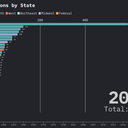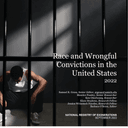Incarceration and Crime: A Complex Relationship, a new report by The Sentencing Project, examines the financial and social costs of incarceration, and evaluates the limited effectiveness it has on crime rates. The report notes that the number of people incarcerated in the United States has risen by more than 500% over the past three decades, up from 330,000 people in 1972 to 2.1 million people today. Though an increase in the number of offenders who are incarcerated has played a modest role in the nation’s decreasing crime rate, the report notes that this policy is subject to decreasing effectiveness in the long-term. The Sentencing Project warns that increasing incarceration while ignoring more effective approaches to preventing crime will impose a heavy burden upon the courts, corrections systems, and communities, while providing a marginal impact on crime. The group recommends that policymakers further assess this problem and adopt more balanced crime control policies that provide resources for crime-prevention efforts such as programming, treatment, and community support.
The Sentencing Project is a national nonprofit organization that works for a fair and effective criminal justice system by promoting alternatives to incarceration, reforms in sentencing law and practice, and better use of community-based services and institutions. (“Incarceration and Crime: A Complex Relationship,” The Sentencing Project, 2005). See The Sentencing Project’s Web site. See also, Sentencing and Resources.



